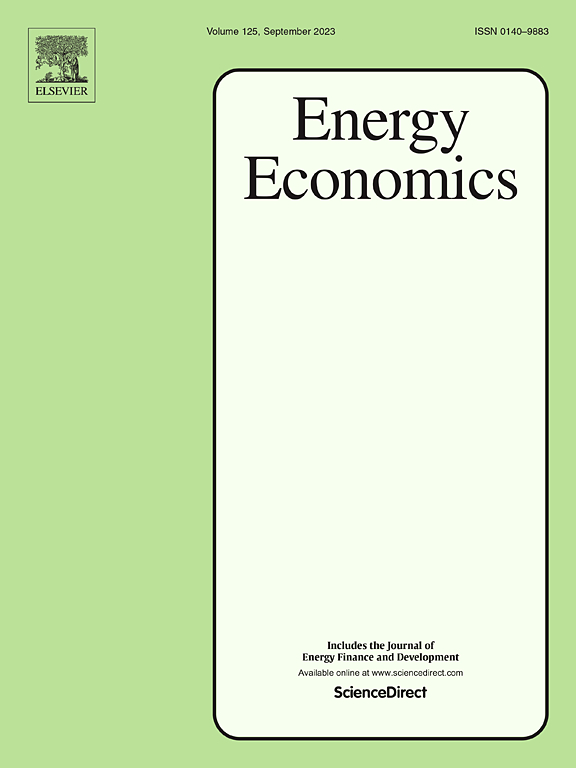电价上涨对光伏太阳能系统需求的影响
IF 13.6
2区 经济学
Q1 ECONOMICS
引用次数: 0
摘要
自2012年以来,瑞典有四个不同的电价区,尽管直到2021年才可以确定一个明显的偏离发展。本研究的目的是调查2021年开始的区域电价差异对瑞典南部和中部城市太阳能光伏装置需求的影响。在方法上,分析采用了一个面板泊松估计量,该估计量考虑了包括零值在内的因变量的倾斜分布。数据包括2016年至2023年所有290个城市。估计结果显示,从2021年起,瑞典南部的电价上涨导致太阳能光伏(PV)安装数量平均每年激增25%,相对于瑞典北部的低价区和2016年至2020年的基期。在瑞典中部,也处于高价格区,估计显示平均每年增长15%。因此,研究结果表明,家庭对价格激励的反应是试图独立于电力市场及其波动的价格。当以兆瓦为单位的装机容量作为因变量而不是装机数量时,也得到了类似的结果。随着时间的推移,不断上涨的电价只能解释不到一半的太阳能光伏需求增长。绝大多数与时间效应有关。本文章由计算机程序翻译,如有差异,请以英文原文为准。
The impact of rising electricity prices on demand for photovoltaic solar systems
Since 2012, there are four different electricity price zones in Sweden, although not until 2021 a clear deviating development can be identified. The aim of this study is to investigate the impact of the regional electricity price divergence starting in 2021 on the demand for solar photovoltaic installations in municipalities in the Southern and Central parts of Sweden. Methodologically, the analysis employs a panel Poisson estimator that accounts for the skewed distribution of the dependent variables including zero values. Data include all 290 municipalities from 2016 to 2023. Estimation results show that the increase in electricity prices in the South of Sweden leads to a surge in the number of solar photovoltaic (PV) installations of 25 % per year from 2021 onwards on average relative to the low-price zone in the North of Sweden and the base period 2016 to 2020. In the case of Central Sweden which is also in the high price zone, the estimates show an increase of 15 % per year on average. Thus, the findings suggest that households react to price incentives by trying to be independent of the electricity market and its fluctuating prices. Similar results are achieved when the installed capacity in megawatts is used as a dependent variable instead of the number of installations. Rising electricity prices explain less than half of the increase in demand for solar photovoltaics over time. A vast majority is related to the time effects.
求助全文
通过发布文献求助,成功后即可免费获取论文全文。
去求助
来源期刊

Energy Economics
ECONOMICS-
CiteScore
18.60
自引率
12.50%
发文量
524
期刊介绍:
Energy Economics is a field journal that focuses on energy economics and energy finance. It covers various themes including the exploitation, conversion, and use of energy, markets for energy commodities and derivatives, regulation and taxation, forecasting, environment and climate, international trade, development, and monetary policy. The journal welcomes contributions that utilize diverse methods such as experiments, surveys, econometrics, decomposition, simulation models, equilibrium models, optimization models, and analytical models. It publishes a combination of papers employing different methods to explore a wide range of topics. The journal's replication policy encourages the submission of replication studies, wherein researchers reproduce and extend the key results of original studies while explaining any differences. Energy Economics is indexed and abstracted in several databases including Environmental Abstracts, Fuel and Energy Abstracts, Social Sciences Citation Index, GEOBASE, Social & Behavioral Sciences, Journal of Economic Literature, INSPEC, and more.
 求助内容:
求助内容: 应助结果提醒方式:
应助结果提醒方式:


